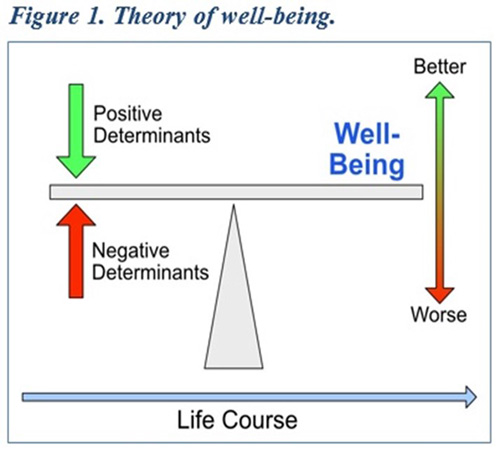Fast facts on...
This publication is available upon request in alternate formats.
PDF Version
Veteran Well-Being
“Well-being” is a broadly accepted goal of public policy, but there are many different ways of defining the concept. VAC’s Research and Policy Directorates reviewed expert literature, considered findings from Veterans’ population studies and held multidisciplinary consultations. The outcome was a composite well-being construct designed for Canadian Veterans and their families. Strategic outcomes were identified to support transition services, policies and programming.
| Domains of Well-being | Strategic Outcomes for Veterans |
|---|---|
| Employment or other Meaningful Activity | Engaged in activities they find beneficial and meaningful |
| Finances | Financially secure |
| Health | Functioning well physically, mentally, socially and spiritually |
| Life Skills & Preparedness | Able to adapt, manage, and cope within civilian life |
| Social Integration | In mutually supportive relationships and engaged in community |
| Housing & Physical Environment | Living in safe, adequate and affordable housing |
| Cultural & Social Environment | Understood and valued by Canadians |
- Determinants of Well-being
Throughout the life course, including transition, determinant fac-tors influence well-being in poorer or better directions. - Well-Being Determinants Work Both Ways
Well-being in one domain is affected by the others — e.g., employment can impact health, social integration and finances. Conversely, health, social inte-gration or financial problems can affect one’s ability to get or keep a job. - Measuring Well-Being
Well-being is measured using both subjective and objective descriptors (indicators) in each of the domains of well-being.
Self-reported indicators can be objectively validated (e.g., income or the presence of health problems). - Using the Composite Well-Being Construct to Identify Levels of Need
Many Veterans are doing well in most domains, but some may be precarious (marginal well-being in a couple of domains), and a smaller portion in crisis (poor well-being in several domains).
Well-Being
Positive Determinants - Better
Negative Determinants - Worse
Life Course

Info Brief Reference (Veteran Well-Being):
Thompson JM, MacLean MB, Roach MB, Banman M, Mabior J, Pedlar D. Charlottetown PE: Re-search Directorate, Veterans Affairs Canada. A Well-being Construct for Veterans’ Policy, Program-ming and Research. Research Directorate Technical Report. Charlottetown. 07 September 2016.
For full reports, contact: VAC.research-recherche.ACC@vac-acc.gc.ca